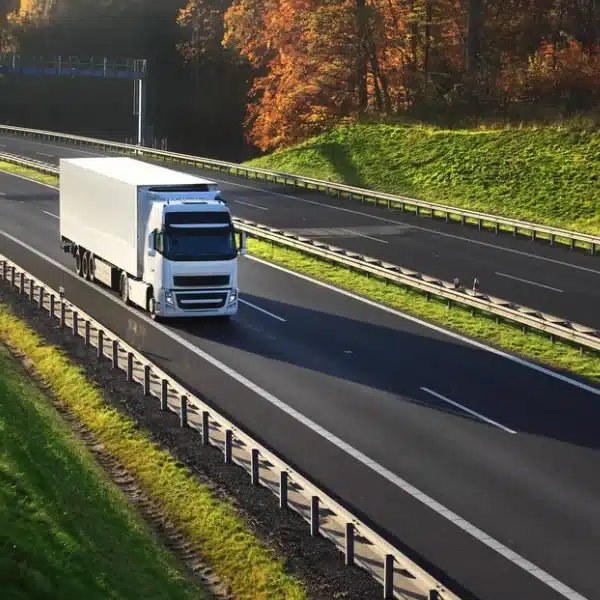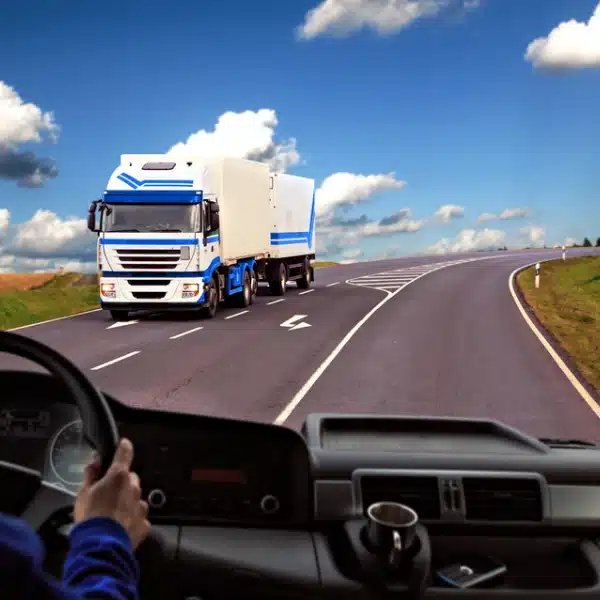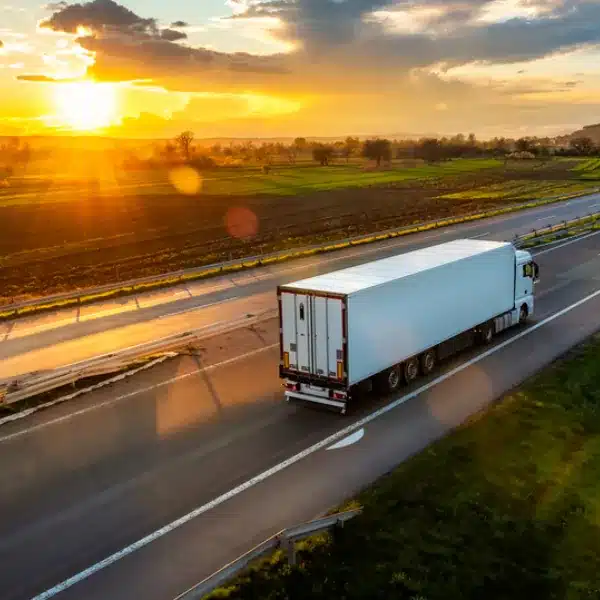We work every day to ensure that your shipments are fast and secure, with customized solutions that guarantee your peace of mind. So you don’t have to worry about anything else.

Loads delivered on time
We transport your goods safely and efficiently at highly competitive prices. We prioritize reliability and punctuality, ensuring your cargo at all times. Your trust travels with us.
Logistics challenges solved
We provide comprehensive and customized logistics solutions. We have an advanced system for planning, optimizing, and tracking our shipments. So you always know where your merchandise is.
People taking care of your cargo
We have expert collaborators in every sector and type of shipment who take care of your merchandise until the moment of delivery. Our mission is for you to not have to worry about anything.
Our greatest concern is your merchandise, and our success lies in the trust our clients place in our work.

Right now, your shipment could be on the verge of reaching its destination to be delivered on time by one of our collaborators. This is the goal of all the people who work at Transvolando: your peace of mind and the assurance that your merchandise will be delivered on time.
No surprises. No setbacks.
We are the leading transport company in Spain.
We provide you with the infrastructure of a large company and the care and dedication of a small company.
Our mission is to innovate technologically to offer our clients a fast and secure service.
That’s why every day we ask ourselves how to improve our service and how to adapt to the needs of our clients.
Transvolando is your road transport company.
We are specialized in the transport of any kind of goods, from groupage transport to special transports such as heavy machinery or very bulky goods. Our track record filled with timely deliveries is the best proof that your trust is our most valuable commodity.
Thanks to our team of professionals and an innovative planning, optimization and tracking system, we can guarantee that your cargo arrives at its destination as scheduled, with no surprises or setbacks and at very competitive prices. All of this allows us to position ourselves advantageously compared to other land transport companies.
Our customer service team is available to provide you with assistance and support at any time, whether it’s to answer questions, resolve problems or provide updates on the status of your shipments. A personalized and attentive service that supports you at all times.
Trust your shipments to our team of experts. We prioritize seriousness, commitment, and well-done work. To achieve this, we rely on an innovative system of planning, optimization, and tracking so you can completely relax about your shipments. Start saving time and money now!
We provide you with an entire team of logistics professionals specialized in transporting any type of merchandise to its destination You can contact them at any time in case of any urgency or unforeseen circumstances. We are your national transport company. We are ready, are you?
We transport your merchandise from point to point throughout the European territory. Our collaborators always choose the best routes to ensure your cargo arrives safely and within an appropriate timeframe. We are your international transport company. Worried about documentation? We take care of it!
We are passionate about our work, and that is reflected in every shipment we make.

 raul del palacio2024-02-09Increíble trato y profesionalidad absoluta por parte de la comercial, Valeria. Nos solucionaron un transporte complicado, haciendo un seguimiento durante días para encontrar la mejor solución y al mejor precio posible. Será nuestra referencia a partir de ahora, sin duda. Muchas gracias.
raul del palacio2024-02-09Increíble trato y profesionalidad absoluta por parte de la comercial, Valeria. Nos solucionaron un transporte complicado, haciendo un seguimiento durante días para encontrar la mejor solución y al mejor precio posible. Será nuestra referencia a partir de ahora, sin duda. Muchas gracias. Nuria mdr2023-12-11Soy manager del departamento de internacional de una empresa de transporte. Tanto el trato como la forma de pago fue muy eficaz. Sin duda, una empresa que se sabe organizar bien en todos los aspectos.
Nuria mdr2023-12-11Soy manager del departamento de internacional de una empresa de transporte. Tanto el trato como la forma de pago fue muy eficaz. Sin duda, una empresa que se sabe organizar bien en todos los aspectos. Alfonso Rico2023-11-27Gente seria y competente
Alfonso Rico2023-11-27Gente seria y competente Mercedes2023-11-24Hemos contratado sus servicios para transporte nacional e internacional de mercancías y nos han prestado un excelente servicio, además de una atenta, rápida y excelente atención al cliente.
Mercedes2023-11-24Hemos contratado sus servicios para transporte nacional e internacional de mercancías y nos han prestado un excelente servicio, además de una atenta, rápida y excelente atención al cliente. Aranda Carlos2023-11-23Encantado con el trabajo, amables limpios. Me ayudaron muchisimo cuando me fui para Madrid. Los volveria a contratar sin ninguna duda, los recomiendo.
Aranda Carlos2023-11-23Encantado con el trabajo, amables limpios. Me ayudaron muchisimo cuando me fui para Madrid. Los volveria a contratar sin ninguna duda, los recomiendo. Joaquin López2023-11-23Puntuales y muy profesionales. He contratado en varias ocasiones sus servicios y allegados míos también y no hemos tenido ningún problema.
Joaquin López2023-11-23Puntuales y muy profesionales. He contratado en varias ocasiones sus servicios y allegados míos también y no hemos tenido ningún problema.
At this point, it should be clear why Transvolando is one of the best land transport companies. However, if you’re still not convinced, we offer you a 10% discount on your first shipment so you can try it out and see for yourself. Trust your logistics with Transvolando. We are completely confident that you won’t regret it.



| Cookie | Duration | Description |
|---|---|---|
| cookielawinfo-checkbox-advertisement | Set by the GDPR Cookie Consent plugin, this cookie is used to record the user's consent for cookies in the "Ads" category. | |
| cookielawinfo-checkbox-analytics | This cookie is set by the RGPD cookie consent add-on. The cookie is used to store the user's consent to cookies in the "Analytics" category. | |
| cookielawinfo-checkbox-functional | The cookie is set by the GDPR cookie consent to register user consent for cookies in the "Functional" category. | |
| cookielawinfo-checkbox-necessary | This cookie is set by the RGPD cookie consent add-on. Cookies are used to store user consent for cookies in the "Required" category. | |
| cookielawinfo-checkbox-others | This cookie is set by the GDPR Cookie Consent plugin. The cookie is used to store the user's consent for cookies from the "Other" category. | |
| cookielawinfo-checkbox-performance | This cookie is set by the RGPD cookie consent add-on. The cookie is used to store the user's consent to cookies in the "Performance" category. | |
| CookieLawInfoConsent | Records the status of the default button of the corresponding category and the CCPA status. It works only in coordination with the primary cookie. | |
| viewed_cookie_policy | The cookie is set by the RGPD cookie consent add-on and is used to store whether or not the user has consented to the use of cookies. It does not store any personal data. |
| Cookie | Duration | Description |
|---|---|---|
| CONSENT | YouTube sets this cookie through embedded YouTube videos and records anonymous statistical data. |
| Cookie | Duration | Description |
|---|---|---|
| VISITOR_INFO1_LIVE | Cookie set by YouTube to measure bandwidth that determines whether the user gets the new or the old player interface. | |
| YSC | The YSC cookie is set by Youtube and is used to track the views of videos embedded on Youtube pages. | |
| yt-remote-connected-devices | YouTube sets this cookie to store the video preferences of the user using embedded YouTube video. | |
| yt-remote-device-id | YouTube sets this cookie to store the user's video preferences using the embedded YouTube video. | |
| yt.innertube::nextId | This cookie, set by YouTube, records a unique ID to store data about which YouTube videos the user has watched. | |
| yt.innertube::requests | This cookie, set by YouTube, records a unique ID to store data about which YouTube videos the user has watched. |